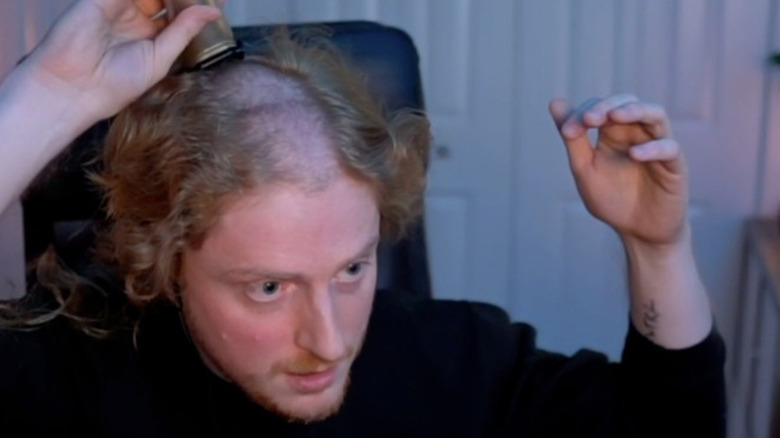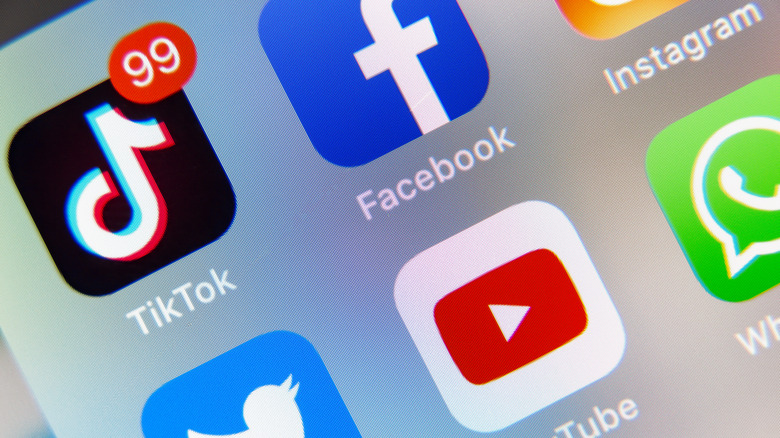TikTok Head Dent Debunked: Why You Don't Have To Worry About Your Headphones
With the rise of streaming and what can only be described as professional Internet usage, more people are finding themselves wearing headphones throughout the day. Whether you are listening to music or just need to block out outside noise, headphones can be an essential workday item for many people. However, there have been renewed fears over whether prolonged headphone usage will affect not only your hearing but your actual head.
In June of 2023, Kotaku reported that Twitch streamer Curtoss participated in a charity stream that featured him shaving his head for donations. While streaming to his audience, he discovered what appeared to be a headphone-shaped dent on the top of his head. This caused major concern for both him and his viewers, and soon, the clip and similar ones began circulating on social media networks like TikTok. Many of these videos seemed to imply that the dent was a significant health concern, something that isn't actually the case.
The Journal of Neurosurgery states it would take nearly 300 pounds of force to make a damaging dent in your head. This recent phenomenon appears to be due to the scalp being rife with soft skin and tissue, according to the National Library of Medicine, making it easy for consistent weights to make small indents. Furthermore, the dents that can be obtained through prolonged headphone usage usually go away within minutes. In short, don't wear your headphones for extremely long periods of time, and your head will be fine.
The rise of social media misinformation
The headphone dent myth can be easily debunked, but the ruckus caused online about it highlights a major problem. With more social networks being introduced and varying levels of content moderation being in use, it is becoming easier than ever to spread misinformation online.
According to a recent University of Southern California study, network algorithms are far more responsible for pushing inaccurate news or facts on its platforms than actual users. While the reason for this is still difficult to pin down definitively, the study found that platforms often encourage users to develop information-sharing habits so that their profiles gain more traction. However, the moderation and fact-checking systems in use do not have such a draw, meaning that more misinformation is being incentivized.
While this appears to be an issue with social media in general, some researchers are specifically worried about TikTok's role. A NewsGuard investigation revealed that over 20 percent of news-centric TikTok videos, ranging from five seconds to ten minutes, contain some level of misinformation. Another from the University of Illinois details the tactics used to spread false information, such as misspelled hashtags. It also suggests that the fast-paced video format allows users to watch more content in a short period of time, which could potentially lead to an algorithm full of misinformation. While the permanent headphone dent panic is minor as a case of misinformation, it does open up far more questions about the current state of information distribution online.

